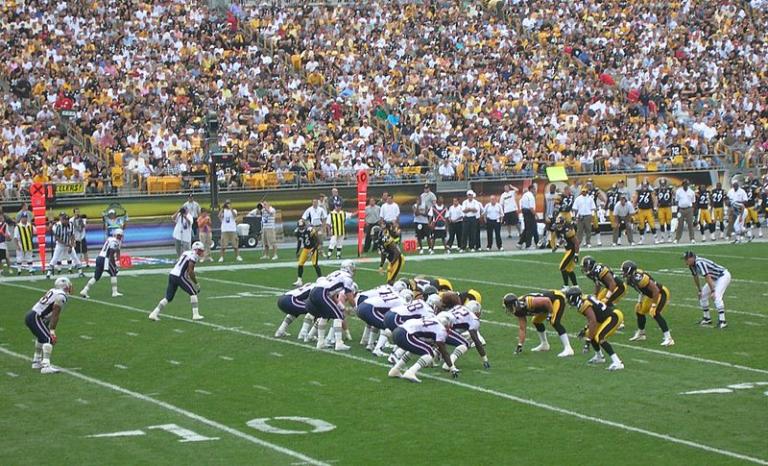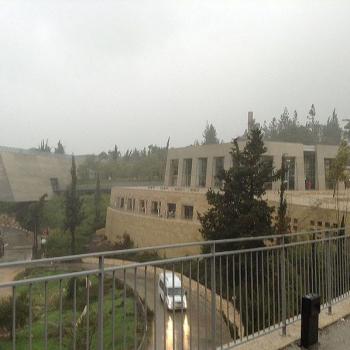
(Wikimedia Commons public domain)
Rumor has it that there is a football game scheduled for this weekend, COVID pandemic willing. Here are a few links to articles about people in the game that might be of particular interest to members of the Church of Jesus Christ of Latter-day Saints. I was alerted to them in a newsletter that I receive from the excellent Deseret News writer Tad Walch:
“The rehabilitator in chief: How Andy Reid built a champion on second chances”
“Success, trust and burnt ends: Why everyone loves Kansas City Chiefs coach Andy Reid”
On Daniel Sorenson, formerly a defensive player for Brigham Young University and now playing for the Kansas City Chiefs, see these profiles:
And, while we’re on football, perhaps I can share this absolutely classic little piece, Thomas Hornsby Ferril’s “Freud, Football and the Marching Virgins,” which, so far as I can tell, first appeared in Readers Digest (September 1974), 71-73:
As I look back over the intellectual caprices of the past quarter century, I am amazed that the Freudians never took out after football. There’s not a single book on the subject. Let me set down some findings that might have been made.
Obviously, football is a syndrome of religious rites symbolizing the struggle to preserve the egg of life through the rigors of impending winter. The rites begin at the autumnal equinox and culminate on the first day of the New Year with great festivals identified with bowls of plenty; the festivals are associated with flowers such as roses, fruits such as oranges, farms crops such as cotton, and even sun worship and appeasement of great reptiles such as alligators.
In these rites the egg of life is symbolized by what is called “the oval,” an inflated bladder covered with hog skin. The convention of “the oval” is repeated in the architectural oval-shaped design of the vast outdoor churches in which the services are held every Sabbath in every town and city, also every Sunday in the greater centers of population where an advanced priesthood performs. These enormous roofless churches dominate every college campus; no other edifice compares in size with them, and they bear witness to the high spiritual development of the culture that produced them.
Literally millions of worshippers attend the Sabbath services in these enormous open-air churches. Subconsciously, these hordes of worshippers are seeking an outlet from sex frustration in anticipation of violent masochism and sadism about to be enacted by a highly trained priesthood of young men. Football obviously arises out of the Oedipus complex. Love of mother dominates the entire world. The churches, without exception, are dedicated to Alma Mater, Dear Mother. (Notre Dame and football are synonymous.)
The rites are performed on a rectangular area of green grass oriented to the four directions. The grass, symbolizing summer, is striped with ominous white lines representing the knifing snows of winter. The white stripes are repeated in the ceremonial costumes of the four whistling monitors who control the services through a time period divided into four quarters, symbolizing the four seasons.
The ceremony begins with colorful processions of musicians and semi-nude virgins who move in and out of ritualized patterns. This excites the thousands of worshippers to rise from their seats, shout frenzied poetry in unison and chant ecstatic anthems.
The actual rites, performed by 22 young priests of perfect physique, might appear to the uninitiated as a chaotic conflict concerned only with hurting the oval by kicking it, then endeavoring to rescue and protect the egg. However, the procedure is highly stylized. On each side there are 11 young men wearing colorful and protective costumes. The group in so-called “possession” of the oval first arrange themselves into an egg-shaped “huddle,” as it is called, for a moment of prayerful meditation and whispering of secret numbers to each other.
Then they rearrange themselves in relation to the position of the egg. In a typical “formation” there are seven priests “on the line,” seven being a mystical number associated not, as Jung purists might contend, with the “seven last words,” but actually with sublimation of the “seven deadly sins” into the “seven cardinal principles of education.”
The central priest crouches over the egg, protecting it with his hands while over his back quarters hovers the “quarterback.” Behind him are three priests representing the male triad. At a given signal, the egg is passed by sleight of hand to one of the members of the triad, who endeavors to move it by bodily force across the white lines of winter. This procedure, up and down the enclosure, continues through the four quarters of the ritual.
At the end of the second quarter, implying the summer solstice, the processions of musicians and semi-nude virgins are resumed. After forming themselves into pictograms, representing alphabetical and animal fetishes, the virgins perform a most curious rite requiring far more dexterity than the earlier phallic Maypole rituals from which it seems to be derived. Each of the virgins carries a wand, which she spins on her fingertips, tosses playfully into the air and with which she interweaves her body in most intricate gyrations.
The virgins perform another important function throughout the entire service. This concerns the mystical rite of “conversion” following the success of one of the young priests in carrying the oval across the last white line of winter. As the moment of “conversion” approaches, the virgins kneel at the edge of the grass, bury their faces in the earth, then raise their arms to heaven in supplication.
Space does not permit interpretation of football as related to dreams, or discussion of the great subconscious reservoirs of thwarted American energy that weekly seek expression through vicarious enjoyment of ritualized violence and infliction of pain. To relate football to the Oedipus complex alone would require, as it well deserves, years of patient research by scholarly men such as we find in the Ford Foundation.
I only regret that these studies were not undertaken a quarter century ago, when the Freudians were in full flower. It’s just another instance, so characteristic of our culture, of too little and too late.












